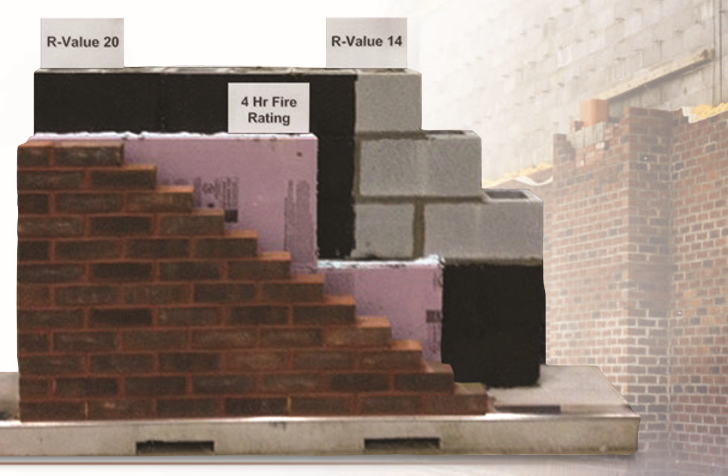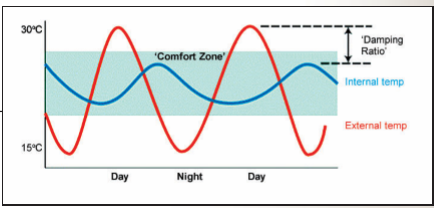Energy Efficient

Due to concrete masonry units thermal mass, a building constructed with concrete block holds heat longer in cool weather, and cool air inside for longer periods, even in the dead of summer. With airtight walls, concrete block also reduces wall leaks, which prevents energy loss and could lower your heating and cooling bills by 50 percent.
Understanding Masonry & Energy Efficiency -Importance of Thermal Mass in Energy Efficiency
Concrete masonry walls provide very effective thermal storage – remaining warm or cool long after the heat or air-conditioning has shut off. This reduction in heating and cooling loads moderates indoor temperature swings and shifts heating and cooling loads to off-peak hours. Due to the thermal mass, the IECC permits concrete masonry walls to have less insulation than frame wall systems to meet the energy requirements.
In addition to the thermal mass benefits, concrete masonry can provide continuous insulation with an R-Value of 14 or 20 (in this typical cavity wall) depending on the type of rigid insulation used. This wall system exceeds current energy code in all 8 areas.
Thermal Performance of masonry depends on its thermal resistance (R-Value) as well as its thermal mass. R-Value of masonry walls are determined by the following characteristics: size, type and density of CMU; type and location of insulation; finish materials; and grouted areas.
Understanding Masonry & Thermal Mass

The effectiveness of thermal Mass is dependent upon climate; building design; insulation position; wall heat capacity. Materials with mass heat capacity (and surface area) are capable of affecting building energy loads by storing and releasing heat as the interior and/or exterior temperature and radiant conditions fluctuate. Thermal mass tends to decrease both heating and cooling loads in a given building. Buildings constructed with masonry can require 18% – 70% less insulation than similar frame buildings, while still providing an equivalent level of energy efficient performance.
Keep in mind concrete masonry units thermal mass flattens out daily temperature differentials and therefore reduces heating and cooling loads on the building’s HVAC system. The resulting energy savings increase with high swings in ambient temperature. When outdoor temperatures are at their peak, the inside of the building remains cool, because the heat has not yet penetrated the concrete masonry unit, producing a time lag as seen in Figure 1. Concrete Masonry slowly releases heat into the interior spaces during late afternoon and evening when buildings are usually empty. This delay in heat transfer is known as “damping.”
Concrete Masonry Units mass is cooled by natural ventilation during the night, and then it is able to absorb heat again the next day.
Thermal mass is not the same as R-value
Thermal mass is not to be confused with R-value, also known as thermal resistance. R-value is expressed as the thickness of the material divided by the thermal conductivity.2 R-values and U factors (thermal transmittance) do not take into account the effects of thermal mass, and by themselves are inadequate in describing the heat transfer properties of construction assemblies with significant amounts of thermal mass such as concrete masonry.